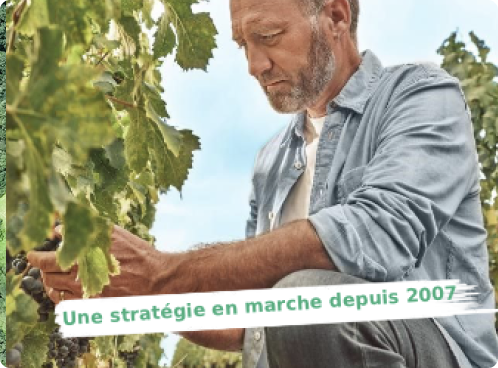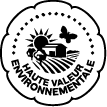The necessary cookies allow the site to function properly.
High Environmental Value
High Environmental Value
In 2024, 60% of Bordeaux vineyards were HEV-certified.
HEV (High Environmental Value) certification was created by the French Ministry of Agriculture further to the Grenelle consultation process on environmental issues. It was designed to recognize estates that have committed to using particularly eco-friendly techniques.
It aims to showcase good practices in terms of sustainable agriculture via performance indicators which apply to all estates. In terms of viticulture, HEV certification for Bordeaux wines is based primarily on the following environmental performance criteria:
- Protecting biodiversity;
- Using protection products responsibly;
- Managing the use of fertilizers.
The Environmental Management System (EMS) for Bordeaux wines offers collective support towards achieving HEV certification.
Want to find out more about HEV wines, or the certification in general? Simply check out the official website of the HEV label!

Focus on the Environmental Management System (EMS) for Bordeaux wines
Launched in 2010, the Environmental Management System (EMS) for Bordeaux wines is a collective initiative to support the environment, conducted at the regional level. Based on volunteering, cooperation and the sharing of experiences, it aims to support the environmental transition and accelerate the evolution of practices in the Bordeaux vineyards.
365 companies, 311 of which are certified HEV and/or ISO 14001, are currently members of the EMS association for Bordeaux wines.

Supporting company commitments
The EMS supports all companies in the Bordeaux wine region (winegrowers, cooperatives and negociants) that wish to join a collective initiative towards environmental progress. To receive support with training, define their environmental strategy and establish an action plan, these companies can count on the CIVB’s accredited tutors.
Their objective? Obtain High Environmental Value (HEV) certification and/or ISO 14001 collective certification in the framework of a collective driven by shared values.
Promoting dialogue to foster change in our region
The EMS brings together companies motivated to make progress together to reduce the environmental impact of the winegrowing sector. By overcoming isolation, confronting experiences in a welcoming atmosphere and sharing good practices, they foster the emergence of new ideas and the pooling of resources!
Biodiversity driven by living soils
A unique region, a unique climate and a multitude of terroirs have together led to the creation of Bordeaux wines. The more our vineyard welcomes diverse flora and fauna, the more it is witness to a well-balanced and healthy ecosystem. Protecting soil life is therefore our priority, every single day.
EMS companies are committed to developing soil fertility by planting hedges and local species along vine plots, planting flowers on fallow land, using green fertilizers, managing ditches sustainably, planting green cover, and much more!
Our actions in a few figures:
- 85% of vine plots planted with green cover in 2019;
- 223 km of hedges registered in 2023 throughout the collective;
- 60% of vines cultivated without herbicides in 2023;
- 288 beehives installed in vine plots in 2023;
- 15 hectares of melliferous plants to attract pollinating insects;

A reduced environmental footprint
To reduce their environmental footprint, EMS companies are tirelessly committed to managing their energy consumption, recycling waste, investing in the proper management of effluents, protecting waterways, and limiting the use of plant protection products.
By identifying sources of impact, these companies are adapting in order to progress. In addition, thanks to performance indicators, they can compare their results with those of the collective!
Our actions in a few figures:
- 20% reduction in water consumed on average per estate;
- 14% reduction in the Treatment Frequency Index (excluding herbicides) in 2023 compared to 2018;
- 19% reduction in the herbicide Treatment Frequency Index in 2023 compared to 2018;
- 34% of the area under vine treated using mating disruption (an alternative method to insecticides).
